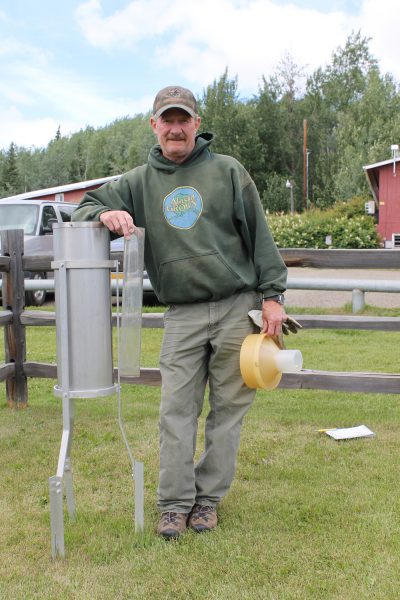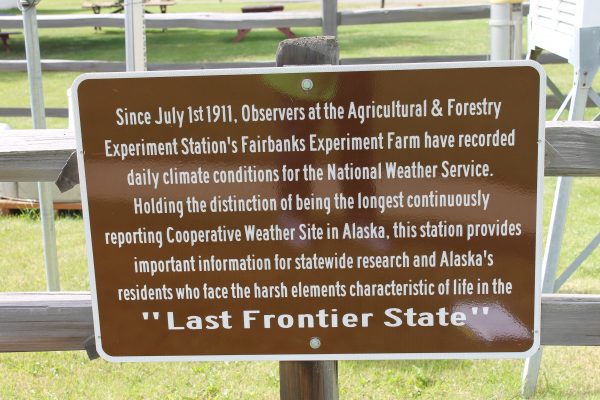Alaska's longest-running weather station to be honored
July 31, 2018
Debbie Carter
907-474-5406
A small, fenced-in area at the Fairbanks Experiment Farm contains the longest continuously
running weather observation station in Alaska.
The experiment farm began recording the weather on July 1, 1911, and has been doing
it ever since.

Rick Thoman, the climate science and services manager for the National Weather Service in Alaska, said other places in the state have recorded the weather longer, but their locations have moved around a great deal. The farm’s weather station has remained in virtually the same spot since 1911.
Thoman said that consistency is important, because shifting the station even a short distance can make quite a bit of difference in readings.
“The places that haven’t moved much are so valuable when we look at climate records,” he said. He notes that the longtime observations are critical to understanding the changing environment.
The station at the University of Alaska Fairbanks is one of four long-term observing stations in the U.S. that the World Meteorological Organization will recognize this fall. The United Nations’ agency notified the National Weather Service recently that the station will receive a bronze plaque this fall. Other stations to be recognized are at the Buffalo Bill Dam in Wyoming; Purdum, Nebraska; and Saint Johnsbury, Vermont.
An early photo of the experiment farm shows the weather station a short distance uphill from its current location in front of the old visitors center. During the 1950s, the station moved for a couple of years to where the farm’s Georgeson Botanical Garden is now, but for most of its history, it’s been within a few yards of its current location.
Alan Tonne, the farm’s manager, records weather observations at 8 a.m. each day. The maximum and minimum temperatures are measured electronically, but he makes all of the other observations on site. He measures evaporation, precipitation, snow depth and wind volume.
“You have to go out and measure the snow if it snows and the rain if it rains,” he said.
Rain is measured in a canister used at all weather stations. If it snows, he has to melt the snow to measure the amount of moisture.

You might say weather runs in Tonne’s family. His grandmother made weather observations for 55 years in Fort Benton, Montana, and his parents have recorded observations for the weather service for 34 years in Stanford, Montana.
Tonne said it was strictly coincidence that he also became a weather observer. He started working as a technician at the Delta Junction research site 34 years ago, and became the farm manager and chief weather observer 13 years ago.
He shares the weather data with anyone who requests it, including researchers and farmers.
Thoman said that weather, because of its importance to agriculture, was recorded at all of the early federal experiment farms in Alaska. The two remaining farms, which are now part of UAF's Agricultural and Forestry Experiment Station, continue making weather observations. He notes that the station at the Matanuska Experiment Farm is the oldest continuous weather station in Southcentral.

Thoman said the Fairbanks experiment farm took over weather duties from the Episcopal Church, which started taking observations in 1904. The earliest records were signed by Episcopal priest Hudson Stuck.
The experiment farm remained the only weather station in Fairbanks until the U.S. Weather Bureau opened an office downtown in 1929. That station moved to the Fairbanks International Airport in 1951.
An event to recognize the station's long-running service is being planned for early fall. The experiment station is one of several active cooperative weather sites in Fairbanks. The others are located at the International Arctic Research Center at UAF, North Pole, the Gilmore Creek Tracking Station, Ester, Goldstream Creek, Keystone Ridge near Murphy Dome and in Fox.


